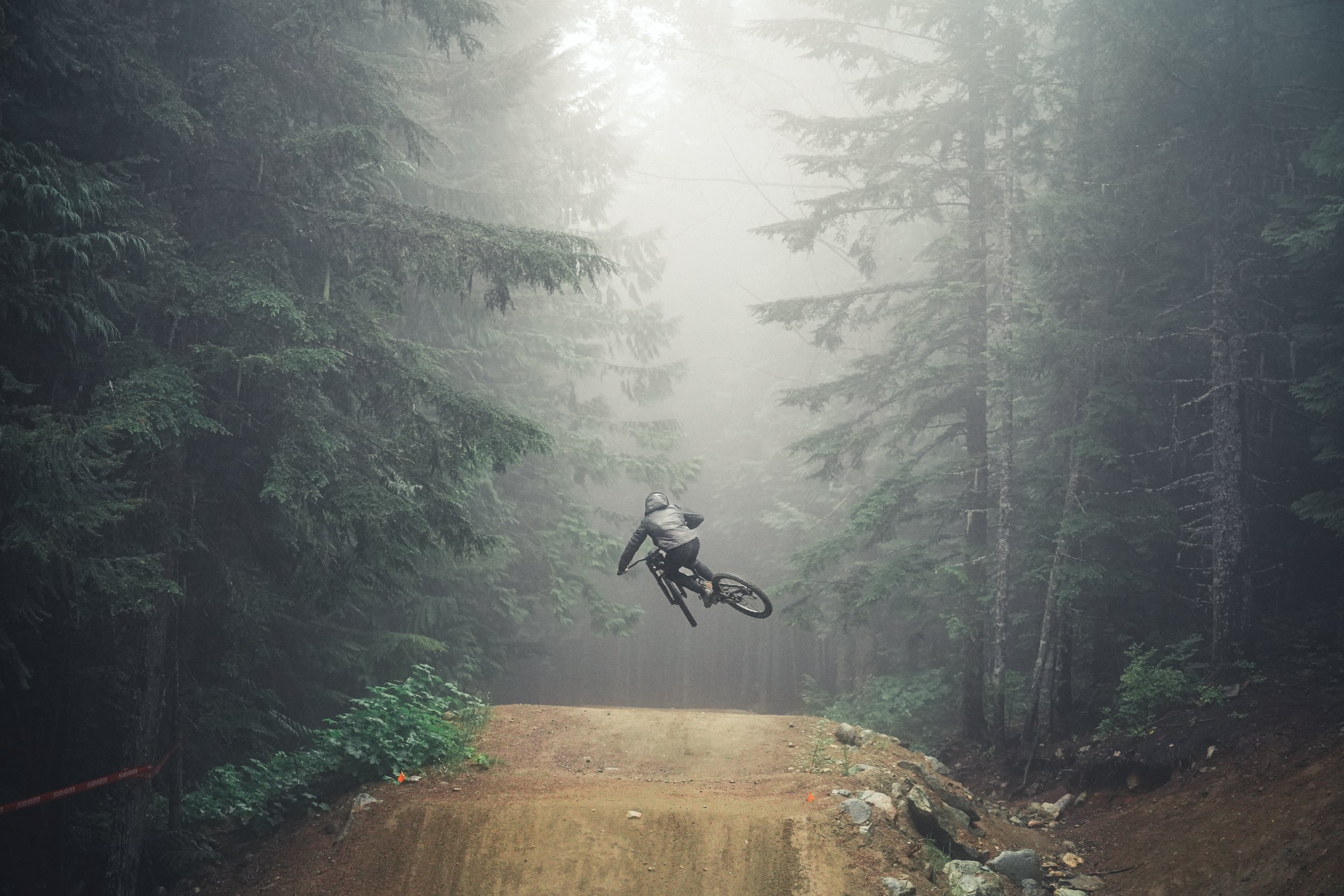A Guide to MTB Photography in Challenging Conditions
Photography is an art that often demands adaptability. The best shots don't always come under ideal circumstances. Sometimes, the magic happens in challenging conditions – low light, adverse weather, or fast-paced environments. In this blog post, we'll explore techniques and tips to help you capture stunning photos in conditions that might seem daunting at first.
Understanding Your Gear:
The first step in overcoming challenging conditions is to intimately know your equipment. Understand your camera's settings, limitations, and how to make quick adjustments. Familiarize yourself with your lenses, their focal lengths, and their strengths in different conditions. By having a strong foundation of knowledge it puts you in the best position possible to select the right tools for the job and to get the best results.
Mastering Low Light Photography:
Low light conditions can be a photographer's nightmare, but they also offer a unique opportunity for creativity. Embrace wider apertures and slower shutter speeds while maintaining a steady hand or using a tripod. Experiment with higher ISO settings to capture more light, balancing it with the trade-offs in noise. Most modern cameras are very capable of producing a great image with an increased ISO, additionally most Photography editing softwares include a De-Noise or AI De-noise as a last result post production to make your images look fantastic even in a low light environment.
Shooting in the Low light, Focusing on the action. I rested my Camera on the steps and dropped the shutter speed down as the action was relatively slow. this ensured I could reduce the ISO enough to eradicate most of the noise and produce a clear image.
Conquering Harsh Sunlight:
As a General ideology and practice, Shooting in direct sunlight can result in harsh shadows and blown-out highlights. Opt for early morning or late afternoon sessions when the sun is lower in the sky, casting softer and more flattering light. Alternatively, use diffusers or reflectors to soften the light and reduce contrast. Dependant on your style however this might not always be necessary and Contrasting Landscapes or subjects can be used to dramatic effect. its all personal preference and you will hone what you like and your style with time!
Weathering the Storm:
Rain, snow, or fog can add drama and atmosphere to your photos. Invest in weather-sealed gear and protection for your camera. Experiment with fast shutter speeds to freeze raindrops or slower speeds to capture the motion of falling snow. Don't forget to wipe your lens frequently and use lens hoods to shield from precipitation. Waterproof sleeves or even an umbrella can be a useful tool when remaining static to completely protect your gear from precipitation, Check your equipment specifications before heading out to ensure that it is water/ weather resistant and has adequate sealing for the environment you wish to go shoot in, Camera/ Video gear is expensive and not something to risk unnecessarily!
Fast Action in Fast Environments:
When faced with fast-paced conditions, such as sports or wildlife photography, use continuous autofocus modes to keep up with the movement. Pre-focus on anticipated points of action and use burst mode to increase your chances of capturing the perfect moment. Whenever I am shooting bikes I will use a Tracking Focus, the in Camera AI will detect the moving subject distinguished from the background and follow them through the scene. Its advisable to have read through your cameras focus capabilities and to be able to recognize what Focus will be most appropriate for the type of photography you take, it can really make a huge difference between getting the shot consistently and not.
Making the Most of Limited Space:
Shooting in confined spaces requires a different set of skills. Use wide-angle lenses to capture more of the scene, and experiment with creative compositions to make the most of limited space. Pay attention to framing and angles to add depth and interest to your photos.
Balancing Colors in Unpredictable Environments:
In conditions where the color temperature changes rapidly, such as during sunrise or sunset, be mindful of white balance settings. Experiment with custom white balance or shoot in RAW format to have more flexibility during post-processing. Auto White balance is a great option that allows the camera to decide what it believes is most appropriate for the scene so that in a changing environment your not missing any potential amazing photos scrolling through your in camera menus trying to find the best option.
Creative Use of Shadows and Silhouettes:
Challenging conditions often create unique opportunities for creative expression. Embrace shadows and silhouettes to add intrigue and mystery to your shots. Experiment with backlighting and shoot against the light for striking results. I like to use a Flash to backlight my subjects regarding Mountain biking where possible. if the Scene is dark or I believe the subject will blend into it, Flash and backlighting is a fantastic way to separate your them from the scene. It is a whole new and challenging avenue to photography that can be fustrating to master but the benefits are truly worth the time and money invested.
Patience and Persistence:
Great photos in challenging conditions often require time and persistence. Wait for the right moment, be patient, and be willing to experiment with different settings and angles until you achieve the desired result. Unlike most quick and on demand luxuries we have in our lives nowadays sometimes photography and getting that perfect shot you envisioned in your head can take hours, days, weeks even for some years. Its completely worth waiting or planning the best times, places and subjects for your photos, its hard to stand out from the crowd so going the extra mile really helps!




